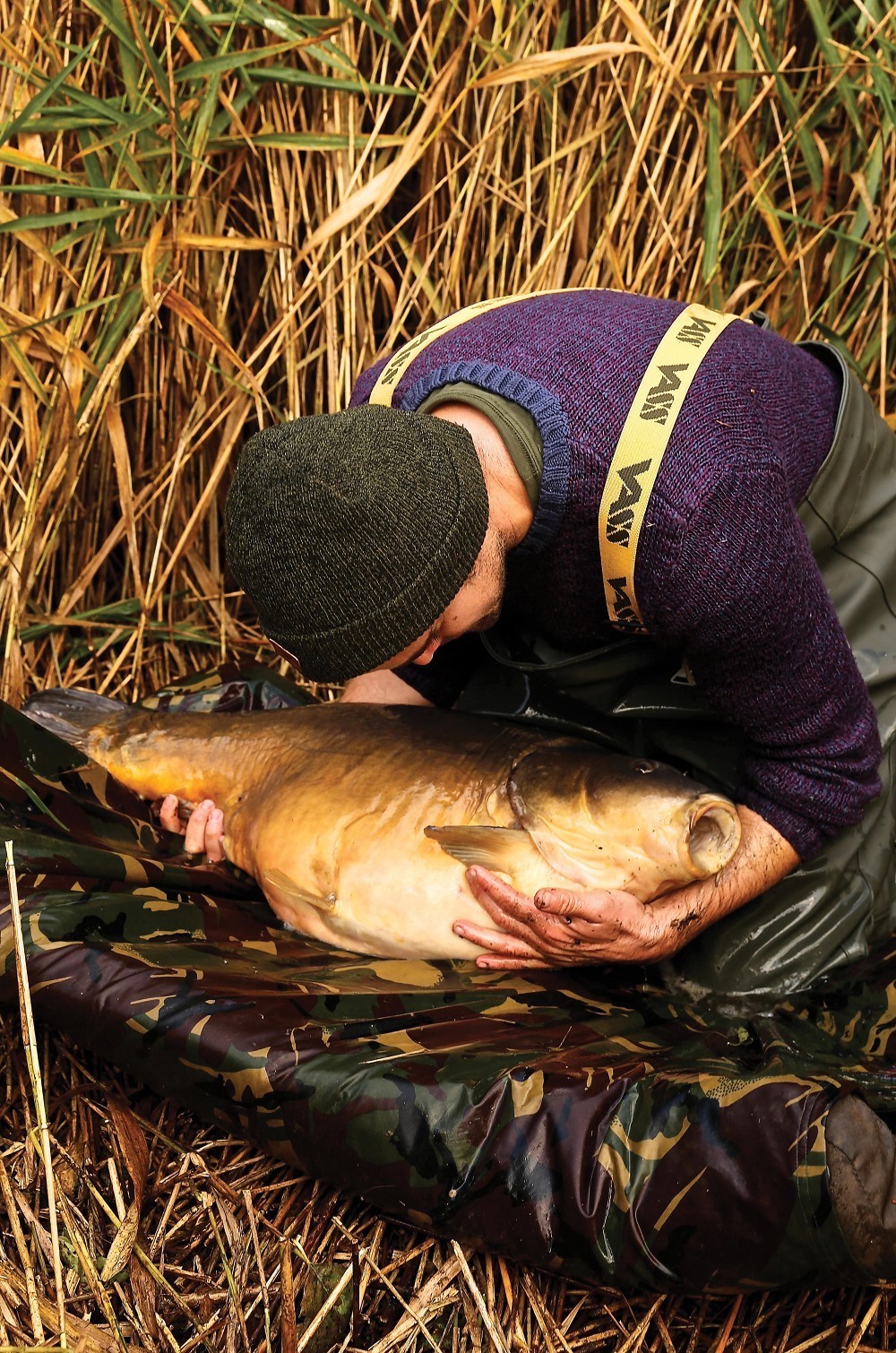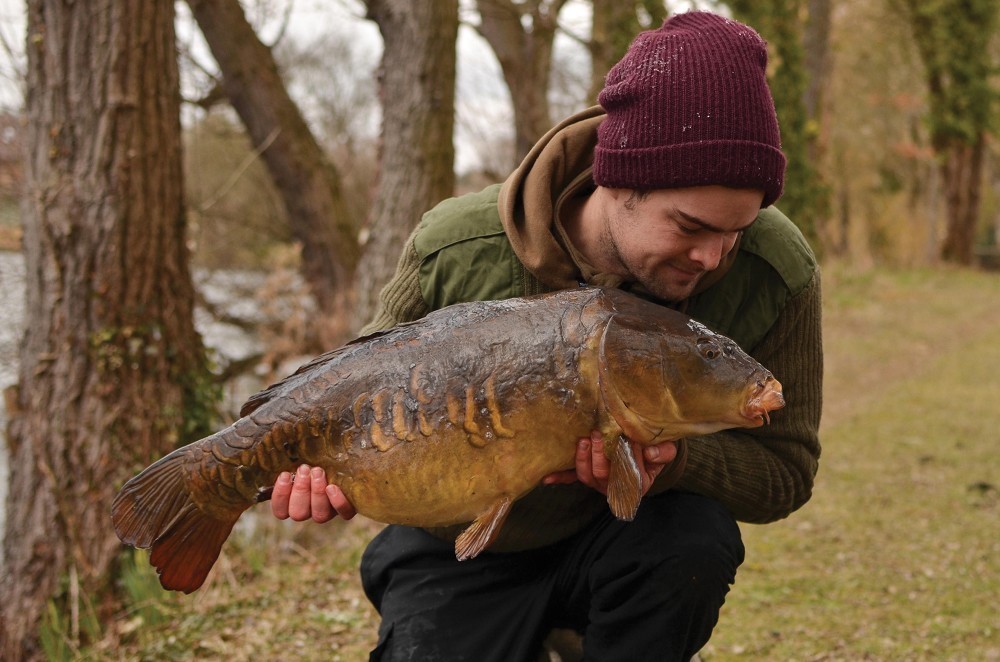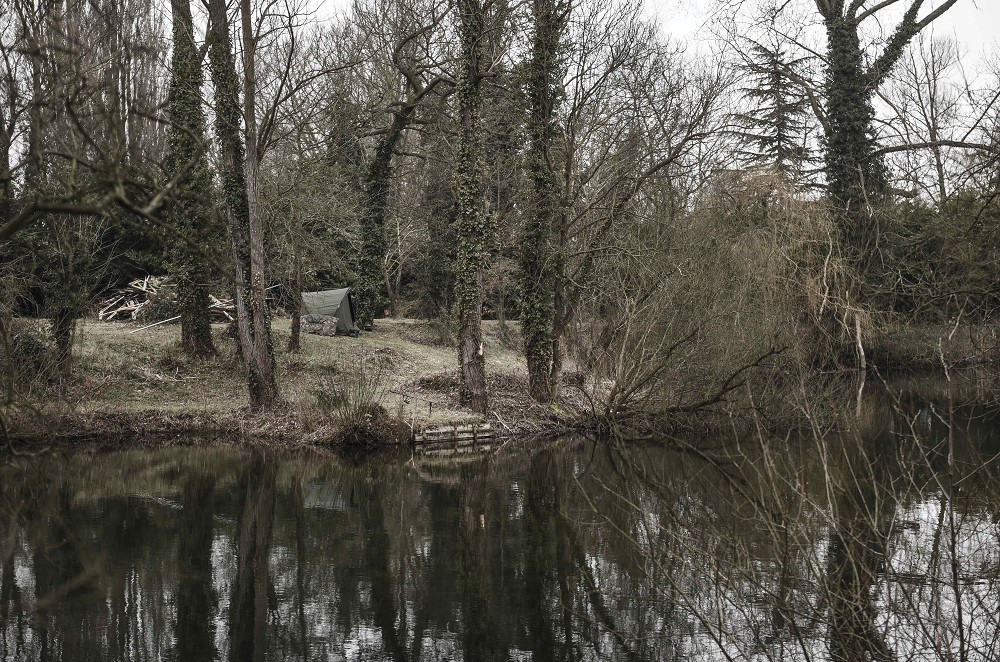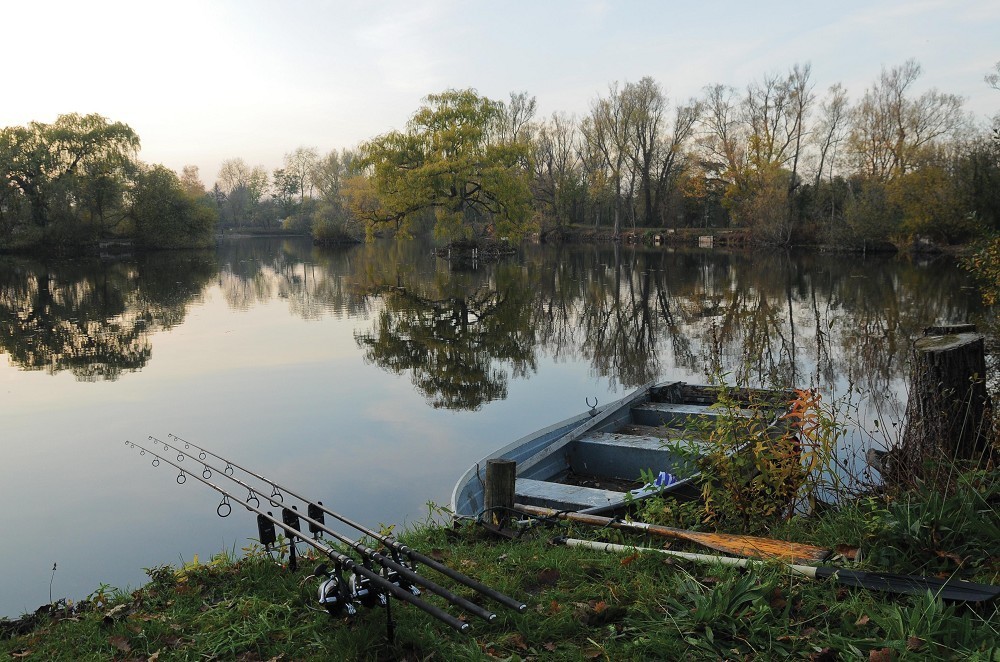The gnarly old linear
Jimmy Armstrong had one year at it: the quest for some of the wrinkliest carp around, and it didn’t take him to long to crack…
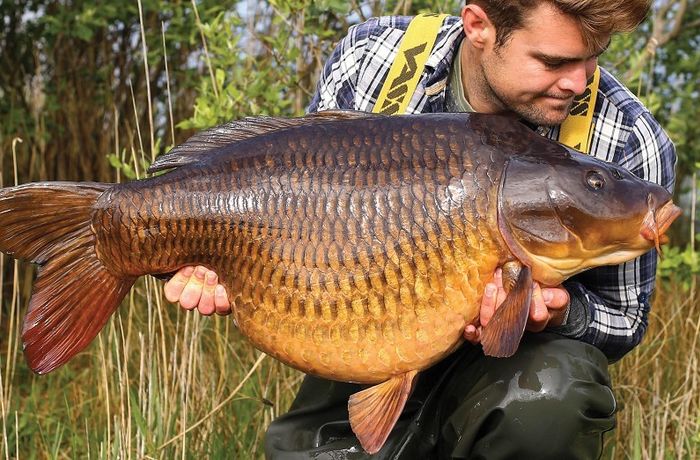
Background knowledge: The venue
A place which has been fished by many legends over the years: Hilton, Quinlan, Nash and co.
I am not going to feel all-heroic for conquering this lake because I was extremely privileged to fish the historic venue and in the end it wasn’t particularly hard. It was a venue that I just clicked with, quickly. However, there were several factors that made it such an easy mission. I felt that my no-nonsense approach, no bullsh*t, just good solid angling, ensured I filled my heart and album with some of oldest, rarest, Cambridgeshire carp I will ever fish for.
The venue, back in the day, had seen many legends come and go: Jack Hilton, Bill Quinlan and Kevin Nash, to name but a few. I was lucky enough to have permission to fish it with three or four others. Amongst its stock included some scarred, wrinkly mirrors with rippled, weathered old skin. Some were scaly characters, others were more leathery. Then it had the queens: a handful of friendly commons, they were hefty old girls nudging mid-thirties and were certainly part of my target. However, the one I really wanted was a gnarly linear. He was a long, lean, fighting machine with a noticeable cut in the top lobe of his otherwise, perfectly-rounded tail. He was an absolute gem and one that I craved the moment I saw a picture!
I fished the Cambs venue for around a year or so, throughout the summer and winter, catching several of the known residents, including the fat ladies, which were the three greedy commons up to 34lb. It was on a cold, damp, winter’s night that I finally latched into the linear and what an impressive carp he was. Scraping the 30lb mark, well, a few ounces under, he was far from the biggest in the intimate pool, but definitely my favourite. An absolute powerhouse, built to fight. He had huge saucer-like scales, a wise sloping head and that distinguishable slice in his tail that just added to his character.
Case study 1: Establishing a bait
‘To me, bait is absolutely imperative and a major part of the puzzle’
The fish were old, decrepit characters that had thrived on neglect over the years. Since the old boys club used to fish it, the water had been occupied. There was a rather large detached house overlooking the lake and it was shut to the general public. Only a handful of anglers were lucky enough to walk its banks and wet a line. Consequently, the fish were thriving on naturals.
It was weedy – top to bottom with the tough, strandy, Canadian pondweed. Although no bait went in, there were plenty of naturals for them to eat: bloodworm, insects and other larvae that inhabited the huge weedbeds and mountains of silt. Due to the nature of the weed, clear spots were also few and far between, I was going to have to harvest my own, or at the very least clear some with a rake.
I first fished the venue in the spring, the perfect time to start trickling in some bait. I opted for a deep red fishmeal, always my first port of call. There’s nothing better than a fishmeal for big, wise carp. They eat it time and time again and it’s no coincidence that big fish anglers continually revert to fishmeals in their pursuits for a whacker. I am no different, even in winter!
I started to drip-feed the bait a kilo at a time in different areas of the lake; on some spots, I’d underarm baits right in the edge, while on other zones I’d scatter it everywhere with the scoop via the boat out in the middle of the pond. My aim was to encourage the carp to feed all over the lake, on my boilies. By doing so, and feeding with regularity, eventually they would see it as a long-term food source, a natural, nutritious meal. The bait in question was spicy, but one that was to prove highly digestible throughout the year. This is key!
I was keeping an eye on my spots and by the end of April I had them frequenting certain areas of the pond. They were fully on the bait, and quite often I would get them feeding within inches of the bank on crumbed boilies. They couldn’t get enough of them. I’d bait up five or six areas at the start of a session and by the time I got back to the first, there would quite often be fish feeding, it was pretty mad.
Once I got into a pre-baiting routine, introducing bait to my spots three times a week, when not fishing, many of the carp would pass the bait onto the mat before I hoisted them up for the camera, a true sign that I had well and truly established a bait. I take this attitude everywhere I go: bait is absolutely imperative and a major part of the puzzle.
Case study 2: Creating my own spot
Hemp, wheat, tares, maples, pellets, you name it, Jimmy was slinging it in to clear areas – and it worked a treat
This is a tactic I use on many lakes that I fish. It is very rare that I target a water that doesn’t contain some sort of weed. The little pond was one such place. It was top to bottom with Canadian meaning that clear spots were few and far between. Consequently, I adopted two methods: one was the use of weed rake; the other was to harvest my own with tiny particles.
Using a little rake tied to the end of some strong braid, I think Angling Intelligence did them at the time, I would spend time casting to my chosen spot, reeling in mounds and mounds of weed. It was a chore, heaving heavy balls of weed to the bank, but all the effort was worthwhile. Preparation in my fishing has always stood me in good stead.
I would often spend several hours doing this and before long the spot would gradually clear. I would either drift over the area in the boat to check the spot, or a quick flick of a lead would reveal a nice clean drop. Once I knew it was getting cleaner, it would be time to start baiting heavily with particles.
Hemp, wheat, tares, maples, pellets, you name it, I was slinging all the tiny particles I could find onto these weedy areas. Viewing from a boat, I would see all the tiny fragments sitting in the layers of weed. As fish fed aggressively, they would tear through the strands, ripping up anything in their way to pinpoint the particles. In time, the spots would gradually get clearer and clearer, allowing me to present a hookbait, and also start feeding just boilies. It is an amazing tactic watching a spot completely transform in a matter of weeks.
I was to take 99.9% of the fish from these particle-prepared clearings including the biggest common and the incredible old linear!
Case study 3: Pop-ups and a needle-sharp hook
Sometimes you have to go away from your normal approach and try something else
Each lake is different, and I must say that I use pop-ups for 80% of my angling, but on this water, those old fish really shied away from a pop-up. I caught the odd one, but for some reason, a bait had to be on the deck in order to receive bites with any consistency. They weren’t pressured or anything, but maybe the fact that they fed so regularly on naturals made them feel uneasy towards a pop-up hovering above their normal feeding zone.
On a warm summer’s day, I gently under-armed a handful of hemp, chopped and whole boilies, corn and nuts onto a spot in the edge. It wasn’t polished or clean, it had a slight covering of weed, but I could see the odd fleck of gravel through it. It was low lying and so I quietly placed a short, Stiff Hinge over the top, just so that the hook wouldn’t mask on any weed. It was very low so looked perfectly natural… to me anyway.
Over the next 30 minutes I watched carp, tails up hoovering up every last morsel, as the pop-up wafted side-to-side without
so much as a pick-up. Once they’d fed on their free banquet, they drifted off into the abyss and I was left totally mugged!
There and then, I reeled in the rig and I introduced another few handfuls of the seed/boilie combination. I whipped up a rig made from a fluorocarbon hooklink, some of my trusty Seaguar, and employed a soft Hair, so that the bait acted naturally. I threaded on a bottom bait that had been drilled out with cork to this, to mimic the weight of the free offerings.
The rig was attached to a helicopter rig, with the top bead slightly pulled up to allow the lead to sit in the weed and encourage the hooklink to lay across the low lying stuff. Before I lowered it in, I checked to see that there were no fish there. I squeezed a PVA nugget very loosely to the hook so that it would melt quickly and hold everything up until it left the rig.
Minutes later, the nugget rose to the surface and through my polaroids the rig settled down onto the weedy spot. I could see the flecks of white, yellow and gold as the particles sat invitingly in the weedy strands. I propped myself up against one of the towering oaks, lapping up the summer sun, and was soon latched to angry carp as the rod hooped over. The bottom bait had done it and was a tactic that I employed for the duration of my time on the pond. Sometimes we try to be a bit too clever when all that’s required is a bait straight out the bag!
Case study 4: Either end of the lake
Carp can be creatures of habit, the sooner you learn this, the better!
Location on any lake is the most important aspect of angling but one thing I identified at the pond was the fact that the fish were either at one end, or the other… rarely both, or in between! It wasn’t huge, only five- to six-acres in size. It had a few dot islands as features, and the bottom was a little up and down but nothing major. I was to quickly learn that you could write off the middle areas regardless of how good they looked, how snaggy the island was, the beautifully glowing drop-off; none of this mattered, they were always where they wanted to be.
One end was shallow, around 5ft deepest, the other end was deeper, up to around 8ft. If I spent a fruitless night in one area, I could be sure that a move for the second night, to the opposite end, would bring action.
It was strange but I soon pinpointed their whereabouts within a session and caught the majority of times. Carp can be creatures of habit, the sooner you learn this, the better!
Case study 5: Big lead, sharp hooks
The difference it made to my results was huge
Margin fishing gave me a massive insight into how carp deal with rigs. At times I would view them suck in the hookbait, shake their heads and literally sling the lead on the spot without getting hooked. I was using standard 2oz leads at the time, with just normal out-the-packet hooks. To be honest, I didn’t give the fish enough credit.
Once I saw this ejection, I whipped up a new presentation comprising 4oz leads and super-sharp hooks honed to needles using a file. The point was a beaked, bottom bait presentation. I honed the point to almost straight into a long, fine needle. Doing a few tests, before placing the rig, I popped each rig side-by-side. I lifted the first one with the hook pricked in my finger, just a standard 2oz lead and hook and was amazed that I could actually lift the lot. I then tried it with the second – a super sharp hook and 4oz lead. It hurt… in fact, it was impossible without it piercing my skin up to the barb and I wasn’t going to try that.
Needless to say that it was a change in fortunes and again it was and is a combo that I use in the majority of situations today!
Case study 6: Just enjoying it
‘They weren’t massive carp by today’s standard, but they were all unique’
Size isn’t everything! I had caught much bigger carp prior to my little pond adventure, and I knew I would be targeting larger specimens after the campaign, but I just had to experience this stunning water, and the rare old residents that inhabit the pond. I love these little adventures. No one to compete with, just me and some lovely old characters. Carp fishing is about enjoyment, set your own goals and do what puts a smile on your face. All I wanted for this encounter was to outwit some of the oldest carp I would ever fish for, possible babies of the fish that the legends caught, maybe even the very odd original. They had character, far more than any carp I had seen. Gnarly, wrinkly old fellas, not massive by today’s standards but they all had something about them.
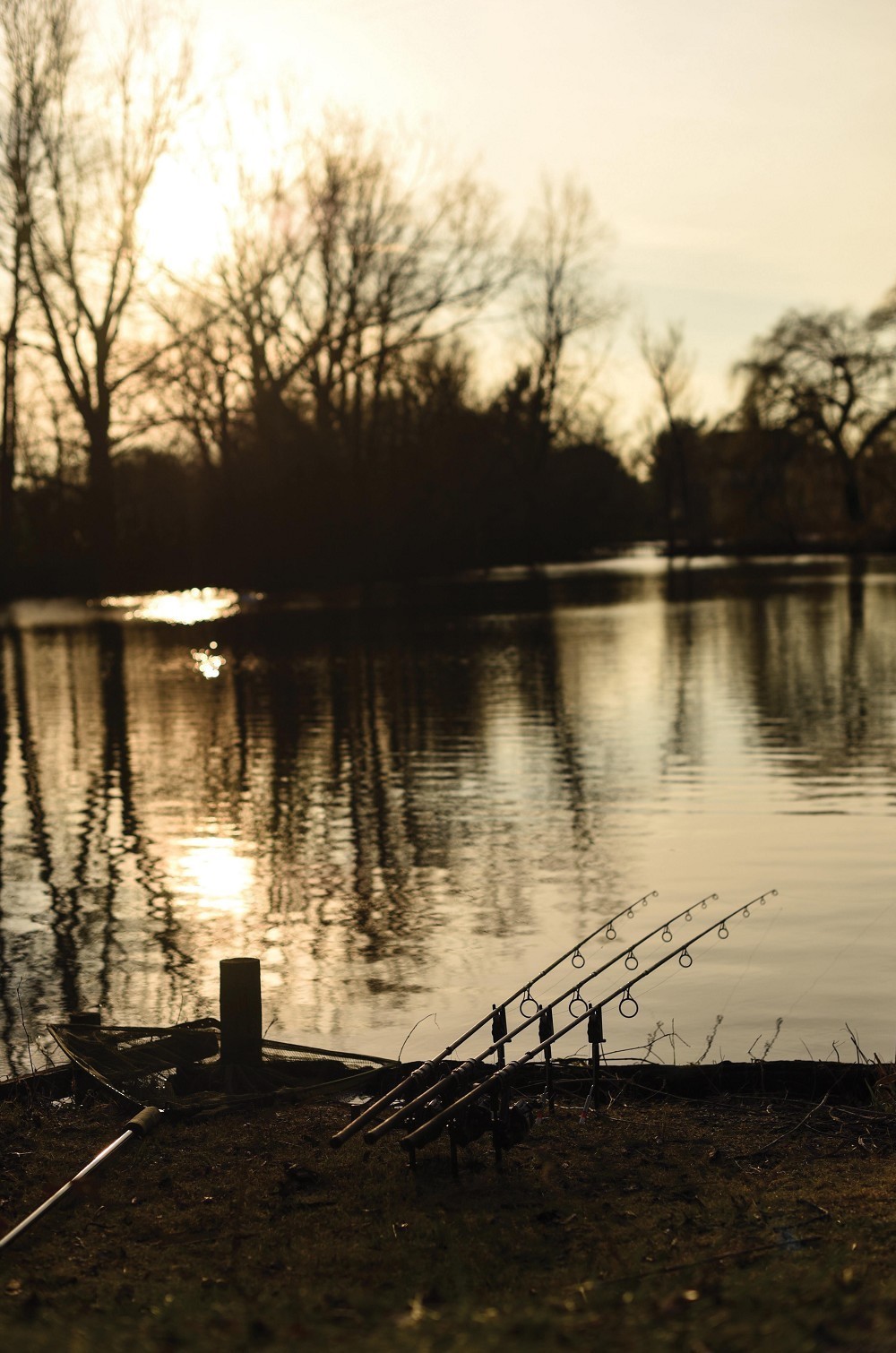 I had caught much bigger carp prior to my little pond adventure, and I knew I would be targeting larger specimens after the campaign, but I just had to experience this stunning water, and the rare old residents that inhabit the pond
I had caught much bigger carp prior to my little pond adventure, and I knew I would be targeting larger specimens after the campaign, but I just had to experience this stunning water, and the rare old residents that inhabit the pondI thoroughly enjoyed the surroundings and the whole atmosphere. The towering, old oak trees made it tortuous at times as they cracked and creaked above my bivvy on a windy night. The huge cascading willows that tickled the surface like fingers and swayed elegantly in the wind. The lily pads that were wrenched from beneath as carp powered through them in search of food. It was a magical place to be, deadly silent, no anglers, just me against the carp!





